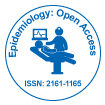Наша группа организует более 3000 глобальных конференций Ежегодные мероприятия в США, Европе и США. Азия при поддержке еще 1000 научных обществ и публикует более 700 Открытого доступа Журналы, в которых представлены более 50 000 выдающихся деятелей, авторитетных учёных, входящих в редколлегии.
Журналы открытого доступа набирают больше читателей и цитируемости
700 журналов и 15 000 000 читателей Каждый журнал получает более 25 000 читателей
Индексировано в
- Индекс Коперника
- Google Scholar
- Шерпа Ромео
- Генамика ЖурналSeek
- БезопасностьЛит
- Доступ к глобальным онлайн-исследованиям в области сельского хозяйства (AGORA)
- Международный центр сельского хозяйства и биологических наук (CABI)
- РефСик
- Университет Хамдарда
- ЭБСКО, Аризона
- OCLC- WorldCat
- Полный текст CABI
- Кабина прямая
- Публикации
- Женевский фонд медицинского образования и исследований
- Евро Паб
- ICMJE
Полезные ссылки
Журналы открытого доступа
Поделиться этой страницей
Абстрактный
HIV Molecular Epidemiology's Application to Public Health: Uncovering Insights for Successful Interventions
Kevis S
This article examines the profound impact of HIV molecular epidemiology on public health strategies, shedding light on its pivotal role in understanding transmission dynamics, guiding prevention efforts, monitoring drug resistance, and optimizing treatment protocols. Through advanced sequencing techniques and phylogenetic analysis, researchers can reconstruct transmission networks, identify high-risk groups, and pinpoint geographic hotspots [1]. This molecular insight informs targeted prevention strategies and allows for early outbreak identification. Additionally, molecular epidemiology aids in detecting drug-resistant mutations, enabling tailored treatment plans and preventing treatment failure. However, ethical considerations and legal implications must be carefully navigated. The integration of molecular epidemiology into public health practices offers a transformative approach to combating the HIV/AIDS pandemic [2].
Журналы по темам
- Биохимия
- Ветеринары
- Генетика и молекулярная биология
- Геология и науки о Земле
- Еда и питание
- Иммунология и микробиология
- Инженерное дело
- Клинические науки
- Материаловедение
- медицинские науки
- Науки об окружающей среде
- Общая наука
- Сельское хозяйство и аквакультура
- Социальные и политические науки
- Уход и здравоохранение
- Фармацевтические науки
- Физика
- Химия

 English
English  Spanish
Spanish  Chinese
Chinese  German
German  French
French  Japanese
Japanese  Portuguese
Portuguese  Hindi
Hindi